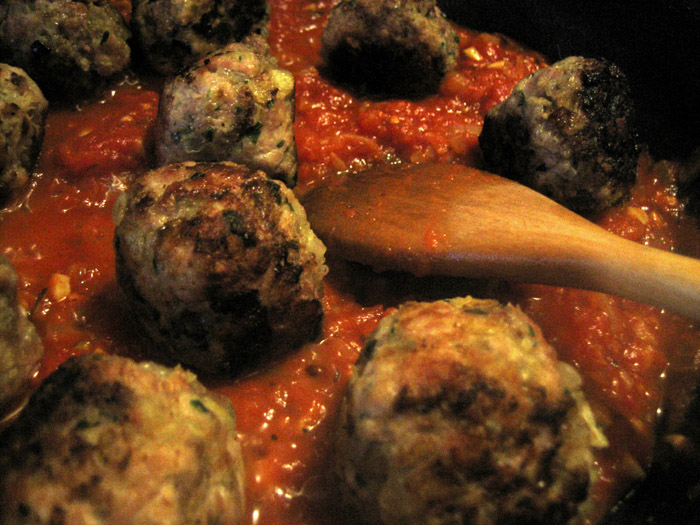There is an amazing market down the street from where I’m living in San Francisco these days. Their produce can be viewed as “on its way out” or “perfectly prime.” I choose to focus on the latter and take advantage of rock bottom prices–a few days ago I found organic raspberries for $1.59, and they were gorgeous, tasty, and not freakishly large. They regularly have zucchini at such a low price that for one, I end up paying about 13 cents. They have whole packs of baby spinach twice the size of the ones at the regular grocery for $1.25. I am obsessed with the possibilities.
Lately, they have had beautiful, beautiful heirloom tomatoes. I picked the best of them and made a simple salad, even slices of the different colors with Himalayan pink salt (flaked variety), fresh cracked pepper, good olive oil, a dash of good balsamic vinegar, and fresh basil julienned on top.
Then, I realized I had a tupperware full of home made chicken stock left from the last time I made chicken & dumplings. I threw it in a big pot to melt, added some rinsed white beans from a can (it was last minute, or I’d have soaked dry ones), and started chopping into equal, small pieces a carrot, small zucchini, round yellow squash, half a Vidalia onion straight from Vidalia, Georgia (my grandma sends us these every year), some gorgeous green beans, and finally, removed the kernals from a fresh stock of white corn. If I recall, I also chopped up the remaining bits of tomatoes from the heirloom salad into small pieces and added them as well. I threw it all in some toasty olive oil and sauteed it with salt and pepper until it was soft but not squishy. I reserved it to add to the soup when it was fully heated with the beans.
What really made the soup delicious and different, though, aside from having such cheap, tasty, gorgeous produce from my neighborhood corner store, was that I took a hint from San Luis Obispo’s Buona Tavola Ristorante that I’ve known of for years: add a lump of pesto to the center of the bowl.
I make a batch of pesto just about every week these days (the BF likes to eat it for lunch when I’m at work), and this time I had some that contained basil, olive oil, salt, pepper, fresh garlic, and almonds. It was perfect and brought the whole soup together into tasty, tasty deliciousness.





















